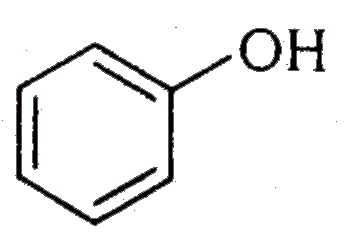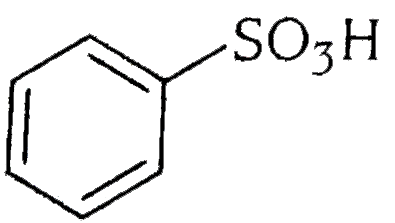An analust is trying to separate a mixture containing the following four organic compounds

She dissolved the mixture in ether and treated the solution with aqueous NaOH solution and finally separated the two fractions: Fraction-I (ether) and Fraction-II (aqueous). Later she acidified Fraction-1 and was able to distill the organic compound(s) into ether to obtain third fraction, Fraction-III. Fraction-III was then treated with aqueous NaHCO3 and the two layers, ether layer (Fraction-IV) and aqueous layer (Fraction-V) were separated. Also Fraction-I was treated with aqueous HCl solution and the two layers, other (Fraction-VI) and aquores layer (Fraction-VII) were seperated. Answer the following three questions based on the above information.
The species left in fraction VI is




The correct Answer is:a
Step by step video, text & image solution for An analust is trying to separate a mixture containing the following four organic compounds She dissolved the mixture in ether and treated the solution with aqueous NaOH solution and finally separated the two fractions: Fraction-I (ether) and Fraction-II (aqueous). Later she acidified Fraction-1 and was able to distill the organic compound(s) into ether to obtain third fraction, Fraction-III. Fraction-III was then treated with aqueous NaHCO_(3) and the two layers, ether layer (Fraction-IV) and aqueous layer (Fraction-V) were separated. Also Fraction-I was treated with aqueous HCl solution and the two layers, other (Fraction-VI) and aquores layer (Fraction-VII) were seperated. Answer the following three questions based on the above information. The species left in fraction VI is by Chemistry experts to help you in doubts & scoring excellent marks in Class 12 exams.
Updated on:21/07/2023Topper's Solved these Questions
- ORGANIC CHEMISTRY BASICSBook:IIT-JEE PREVIOUS YEAR (CHEMISTRY)Chapter:ORGANIC CHEMISTRY BASICSExercise:Interger Answer Type Questions
Explore 1 Video
- ORGANIC CHEMISTRY BASICSBook:IIT-JEE PREVIOUS YEAR (CHEMISTRY)Chapter:ORGANIC CHEMISTRY BASICSExercise:CHAPTER TEST
Explore 2 Videos
- NUCLEAR CHEMISTRYBook:IIT-JEE PREVIOUS YEAR (CHEMISTRY)Chapter:NUCLEAR CHEMISTRYExercise:CHEMISTRY
Explore 2 Videos
- P BLOCK ELEMENTSBook:IIT-JEE PREVIOUS YEAR (CHEMISTRY)Chapter:P BLOCK ELEMENTSExercise:Topic 2
Explore 1 Video
Similar Questions
Knowledge Check
An analust is trying to separate a mixture containing the following four organic compounds

She dissolved the mixture in ether and treated the solution with aqueous NaOH solution and finally separated the two fractions: Fraction-I (ether) and Fraction-II (aqueous). Later she acidified Fraction-1 and was able to distill the organic compound(s) into ether to obtain third fraction, Fraction-III. Fraction-III was then treated with aqueous NaHCO3 and the two layers, ether layer (Fraction-IV) and aqueous layer (Fraction-V) were separated. Also Fraction-I was treated with aqueous HCl solution and the two layers, other (Fraction-VI) and aquores layer (Fraction-VII) were seperated. Answer the following three questions based on the above information.
What is true about the species left in fraction-IV?AIt is stronger acid than carbonic acidBIt is stronger acid than waterCIt is neutral to moistened litmus paperDIt cannot be extracted into an aqueous Ba(OH)2 solutionAn analust is trying to separate a mixture containing the following four organic compounds

She dissolved the mixture in ether and treated the solution with aqueous NaOH solution and finally separated the two fractions: Fraction-I (ether) and Fraction-II (aqueous). Later she acidified Fraction-1 and was able to distill the organic compound(s) into ether to obtain third fraction, Fraction-III. Fraction-III was then treated with aqueous NaHCO3 and the two layers, ether layer (Fraction-IV) and aqueous layer (Fraction-V) were separated. Also Fraction-I was treated with aqueous HCl solution and the two layers, other (Fraction-VI) and aquores layer (Fraction-VII) were seperated. Answer the following three questions based on the above information.
Fraction-V on acidification followed by distillation will giveA B
B C
C D
D
The mole fraction of solute in 2.5 m aqueous solution is
A0.055B0.043C0.86D0.25
Mole fraction of a solute in 2.5 molal aqueous solution is
View SolutionMole fraction of solute in 1 mole aqueous solution is
View SolutionMole fraction of the solute in a 1 molal aqueous solution is :
View SolutionWhat is the mole fraction of the solute in a 1.0 m aqueous solution ?
View SolutionWhat is the fraction of the solute in a 1.00 m aqueous solution ?
View Solution

